Natural cooling saves energy in home offices by reducing reliance on air conditioning systems. You'll benefit from lower electricity bills and a smaller carbon footprint. By employing strategies like strategic window placement, effective insulation, and cross-ventilation, you can maintain a comfortable workspace without cranking up the AC. Shade and vegetation around your home office further enhance cooling effects. These methods work with nature, not against it, to regulate temperature and improve air quality. Proper implementation of natural cooling techniques can lead to significant energy savings while creating a more pleasant and productive work environment. Discover how simple changes can transform your home office into an energy-efficient oasis.
Understanding Natural Cooling Principles
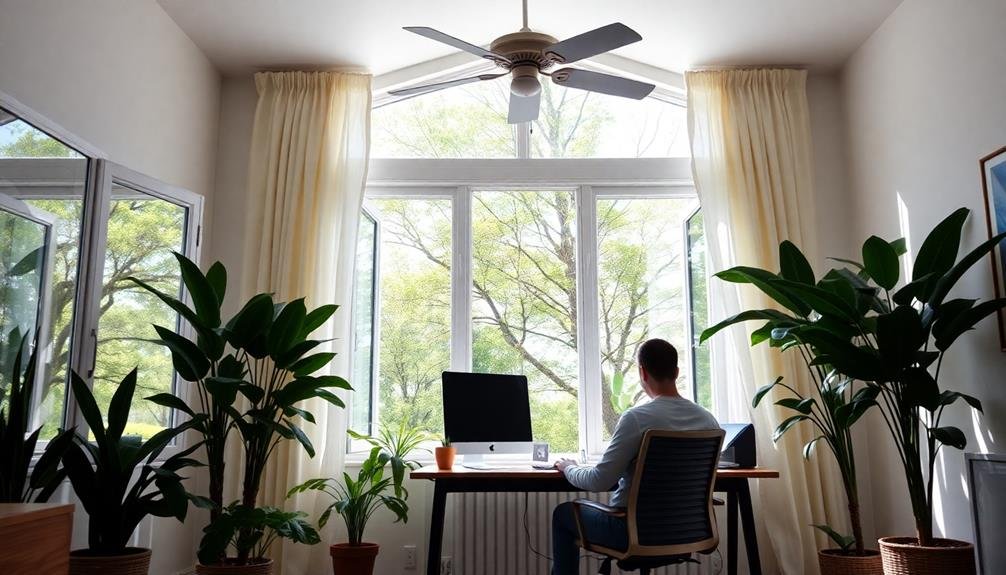
Plunge into the world of natural cooling by understanding its fundamental principles. Natural cooling harnesses the environment to regulate indoor temperatures without relying on energy-intensive mechanical systems. It's based on three key concepts: heat gain prevention, heat removal, and thermal mass utilization.
To prevent heat gain, you'll want to block solar radiation from entering your home office. This can be achieved through strategic shading, reflective surfaces, and proper insulation.
Heat removal involves creating pathways for hot air to escape while drawing in cooler air. You can accomplish this through cross-ventilation, stack effect, and night flushing techniques.
Thermal mass is your ally in temperature regulation. Materials with high thermal mass, like concrete or brick, absorb heat during the day and release it at night, helping to maintain a stable indoor temperature.
By incorporating these elements into your home office design, you'll create a naturally cooler space that requires less energy for artificial cooling.
Understanding these principles allows you to make informed decisions about window placement, building materials, and ventilation strategies, ultimately leading to a more comfortable and energy-efficient home office environment.
Strategic Window Placement
Windows play an essential role in natural cooling for your home office. To maximize their cooling potential, strategically place them to create cross-ventilation. Position windows on opposite walls or adjacent walls at right angles to encourage airflow. This setup allows cooler air to enter from one side and warmer air to exit from the other, creating a natural breeze.
Consider the direction of prevailing winds in your area when deciding window placement. Windows facing the wind's direction will act as intake points, while those on the opposite side will serve as exhaust points. Install operable windows that you can easily open and close to control airflow.
Don't forget about vertical placement. High windows or clerestories can help vent hot air that rises to the ceiling, while lower windows bring in cooler air.
Combine different window types, such as casement, awning, and double-hung, to maximize airflow control. Use window treatments like blinds or shades to block direct sunlight during the hottest parts of the day, preventing heat gain.
Effective Insulation Techniques
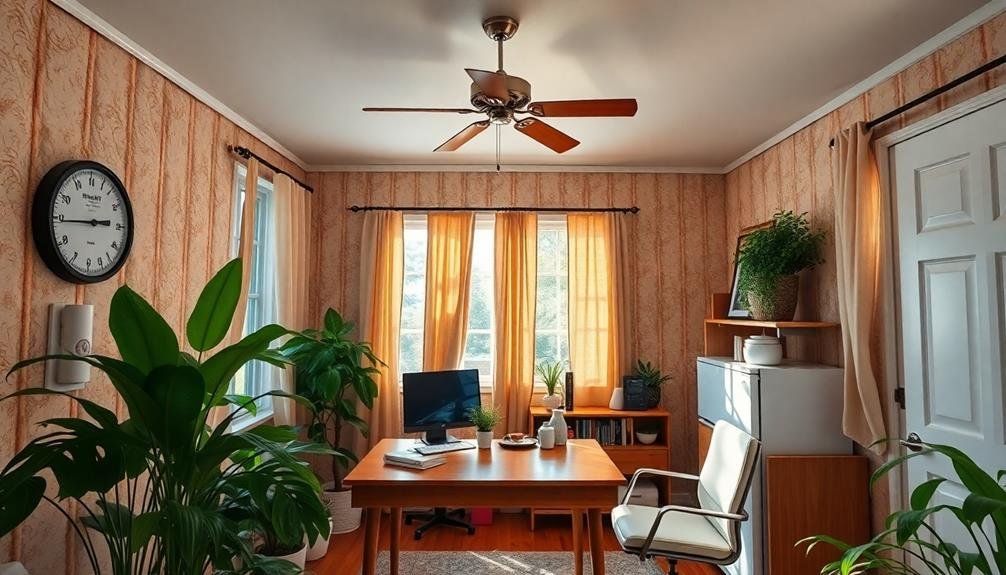
When it comes to natural cooling, effective insulation is your secret weapon. Proper insulation keeps heat out during summer and in during winter, reducing your reliance on artificial cooling and heating systems.
Start by examining your walls, ceiling, and floors. Add insulation to these areas if they're lacking, focusing on materials with high R-values like fiberglass, cellulose, or spray foam.
Don't forget about your windows and doors. Install weatherstripping around doors and use caulk to seal any gaps around window frames. Consider upgrading to double-pane or triple-pane windows for enhanced insulation.
For existing windows, apply reflective window film to reject solar heat.
Your attic plays an essential role in temperature regulation. Make sure it's well-ventilated and properly insulated to prevent heat from seeping into your home office.
Install radiant barriers in the attic to reflect heat away from your living space.
Lastly, don't overlook smaller details. Use draft stoppers under doors, insulate electrical outlets on exterior walls, and cover bare floors with rugs or carpets.
These simple steps can greatly improve your home office's insulation, making natural cooling more effective and energy-efficient.
Harnessing Cross Ventilation
Cross ventilation can really step up your natural cooling game in your home office. It's a simple yet effective technique that uses the natural flow of air to cool your space. To harness cross ventilation, you'll need to create a path for air to move through your office.
Start by identifying the direction of prevailing winds in your area. Open windows on opposite sides of your office, with one on the windward side and another on the leeward side. This setup allows cool air to enter and push out warm air.
If you've got only one window, use a fan to draw air in or out, creating a similar effect. Don't forget about interior doors. Keep them open to promote airflow throughout your home. You can also use strategically placed fans to enhance the natural breeze.
Consider installing window screens to keep insects out while letting air in. For maximum efficiency, time your ventilation. Open windows during cooler parts of the day, typically early morning or evening. Close them when it's hot outside to trap the cool air in.
Shade and Vegetation Benefits
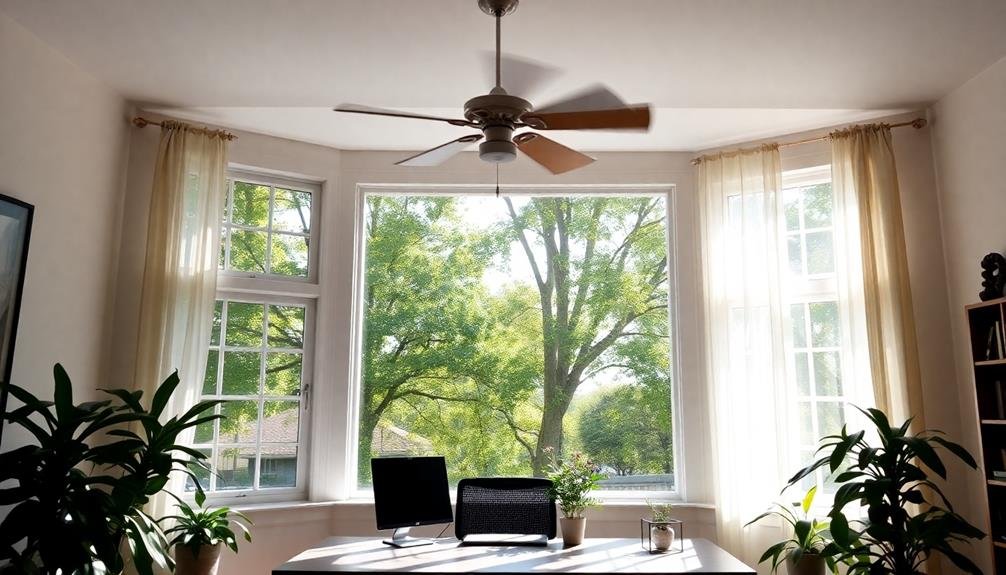
Nature's own air conditioning system comes in the form of shade and vegetation. When you strategically plant trees and shrubs around your home office, you're creating a natural barrier against the sun's intense heat. Deciduous trees are particularly effective, as they provide shade in summer and allow sunlight to warm your space in winter.
Incorporating vegetation doesn't just cool your office; it also purifies the air and enhances your work environment. Consider adding indoor plants to further improve air quality and create a calming atmosphere. Here's a quick guide to effective shade and vegetation strategies:
| Strategy | Benefits | Best Locations |
|---|---|---|
| Deciduous trees | Seasonal shading | South and west sides |
| Evergreen trees | Year-round protection | North side |
| Climbing vines | Vertical shading | Walls and trellises |
| Shrubs | Lower-level shading | Windows and foundations |
| Indoor plants | Air purification | Throughout office |
Frequently Asked Questions
How Much Money Can I Save Annually by Implementing Natural Cooling Methods?
You can save $100 to $300 annually by implementing natural cooling methods. Your exact savings depend on your climate, home size, and current energy usage. Start with simple techniques like using fans and opening windows strategically.
Are There Any Potential Health Benefits Associated With Natural Cooling Techniques?
You'll enjoy improved air quality and reduced exposure to indoor pollutants with natural cooling. It can boost your mental well-being, enhance sleep quality, and increase productivity. You'll also experience fewer respiratory issues and allergic reactions.
Can Natural Cooling Be Effective in Extremely Humid Climates?
You can still use natural cooling in humid climates, but it's less effective. Try combining it with dehumidifiers or fans. Cross-ventilation and proper insulation help too. It'll be more challenging, but you can still see some benefits.
How Do I Balance Natural Cooling With Air Quality Concerns in Polluted Areas?
You can balance natural cooling with air quality by using air purifiers, installing high-quality filters, and ventilating during low-pollution hours. Consider creating a positive pressure environment indoors and using plants to naturally filter air.
What Are the Best Plants for Indoor Natural Cooling in Home Offices?
You'll find snake plants, ficus, and peace lilies excellent for indoor cooling. They're easy to maintain and release moisture through transpiration. Spider plants and aloe vera also work well, purifying the air while cooling your home office.
In Summary
You've learned how natural cooling can transform your home office into an energy-efficient space. By leveraging strategic window placement, insulation, cross ventilation, and shade, you'll reduce your reliance on artificial cooling. Remember, it's not just about saving energy—it's about creating a comfortable, sustainable work environment. Embrace these principles, and you'll enjoy lower utility bills while minimizing your carbon footprint. Your home office can be both productive and eco-friendly with these simple, natural cooling techniques.

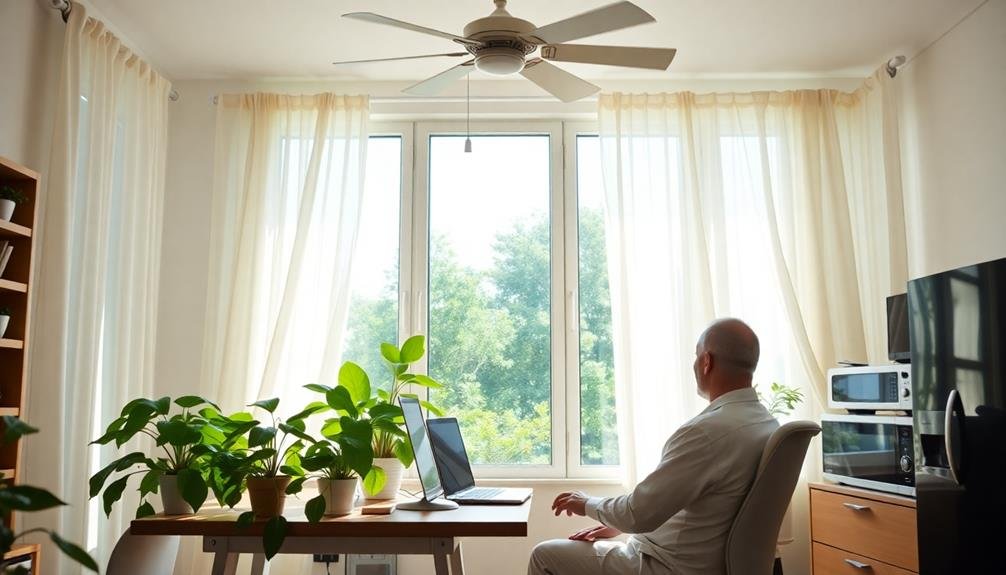
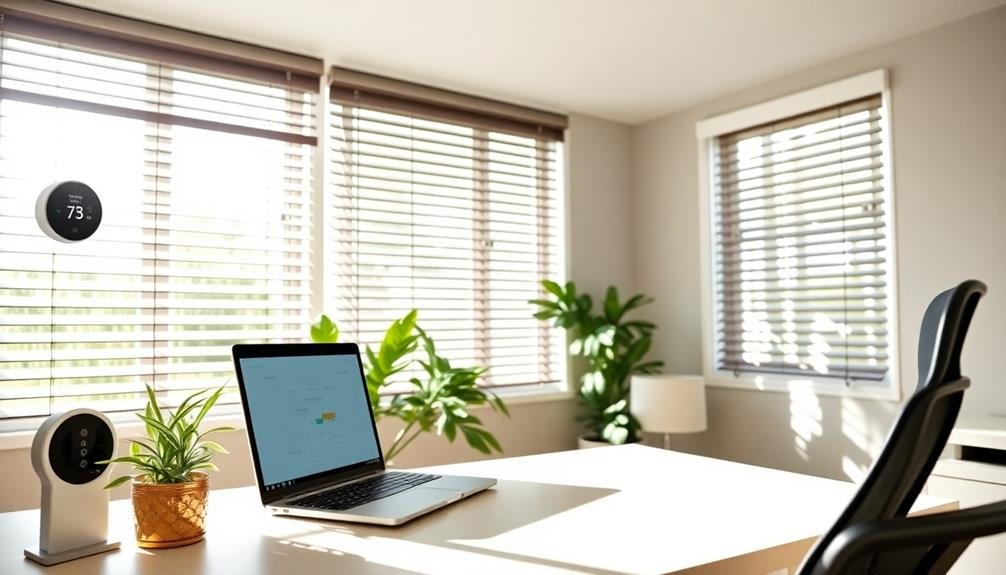
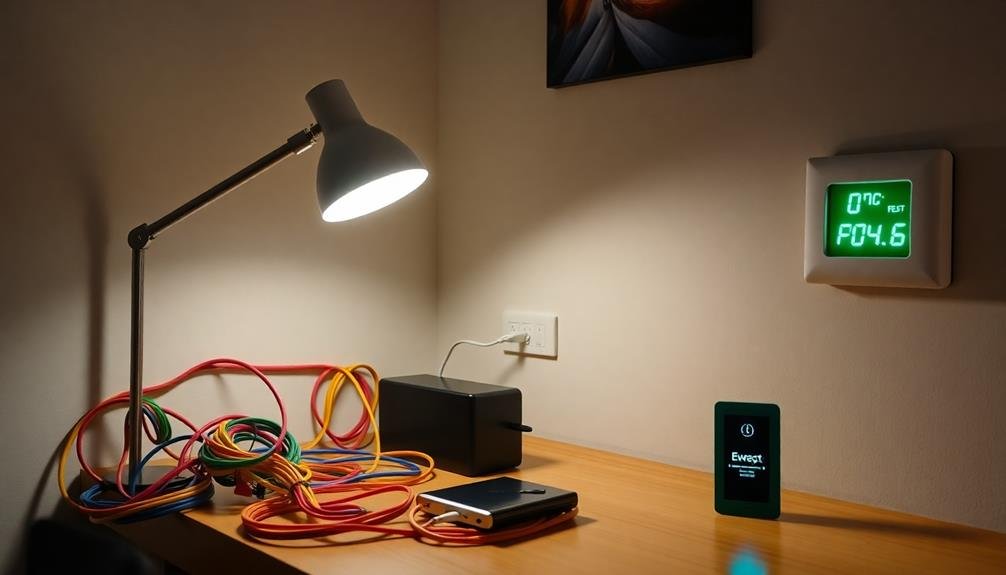
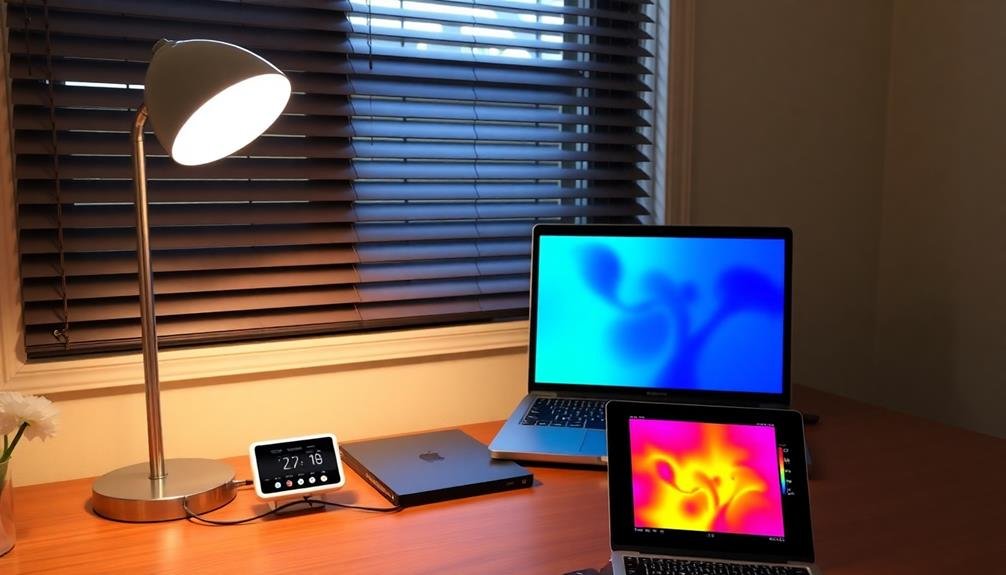
Leave a Reply